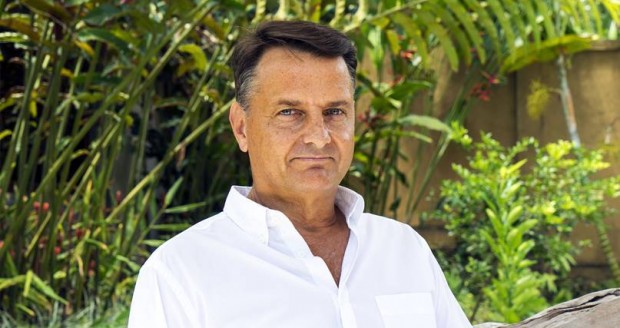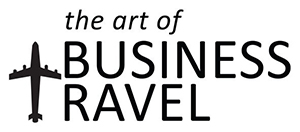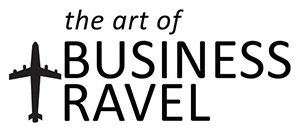
Former hotelier turned design agency guru Michael Sagild of BLINK Design Group talks with Nick Walton about innovative design, sustainability, and the business hotels of the future.
You’re a seasoned hotelier, having worked with major hotel brands like Minor, the Stein Group and Hyatt over the past 28 years; why the move into design?
The hospitality industry remains fascinating to me. It is ever evolving and in recent years the guest is finally in the driver’s seat. Tripadvisor, OTAs and social media have created a new modality for the industry. With the upcoming mergers of Marriott and Starwood, and Accor and Fairmont we will see another round of consolidation and these mega brands will have to focus even more on their core business, namely marketing their brands and leveraging their loyalty programs. In this new environment I believe that architecture and design firms will be asked to become solutions providers. In this space we will do well, especially given our association with technology companies through our shareholders.
Has design always been an interest?
I have always had a passion for design. I have also seen the effect good design has on the bottom line of a hotel. Well-designed restaurant spaces induce spending and social interaction. The rewards in the hotel industry are immediate and clients react instantly.
What do you think is missing from the hotel scene in Asia Pacific?
Speaking as a former hotelier, Asia Pacific has always been the holy grail of hospitality service. The expectations of service in Asia are so much higher than elsewhere in the world, so when this isn’t delivered, the negative feedback and reactions can be very harsh. From a product standpoint, I believe Asia could still benefit from well conceptualized destination resorts with a more comprehensive offering to the regional Asian traveller. We see many brands trying to use older models and force the ‘new’ Asian traveller to use these.
How do hotel designers meet the needs of their many different clients?
At Blink Design Group, we take a ‘concierge style’ approach to the needs of the client. We spend extensive time listening and understanding the underlying desires and needs, whilst at the same time ensuring that both parties are completely aligned in the understanding of the hotel concept as it develops. This is where my hospitality background comes in. I can assist a client early in the process to provide advice on potential cost issues, and on pragmatic approaches to the number of restaurants and spa facilities.
“New versions of AirBnB will emerge and hybrids will require design features. Just as 5 years ago we wouldn’t have dreamt of getting into a stranger’s car, AirBnB is now part of our lives and the biggest disruptor in hospitality.”
What defines a ‘business hotel’ and how have you seen that change during your career?
I would suggest that the ‘business hotel’ has been the biggest benefactor of the growth in the use of technology. It is becoming a lot easier as a business traveller to ‘interact’ with the hotel, although the need to sign those registration forms at check in still baffles me. As designers, we focus on the ‘business room’ where the desk is slowly disappearing, the bathroom is reinvented with better showers and great closet designs and, with the exception of the toilet stall, moves towards a much freer integration with the rest of the room. Because of social media’s online relationships, we find that the public areas are becoming ‘nesting areas’. People meet in smaller nooks and corners so the ‘open plan’ restaurants are no longer needed. Developers and owners also respond well to our focus on creating revenue-generating areas in lobbies and arrival foyers.
How are the expectations of busy business travellers changing? Are we seeing the death of the chain hotel?
Quick, relevant and personal service will win. Business travellers are becoming thick skinned and see through the ‘courtesy call from a sales manager’. Pay attention to my needs, get me my key (or let me proximity-wave my mobile phone at the door lock), have the best mattress, linens, blackout, wifi and shower and I’m happy. If I can leave the hotel without checking out (you have my credit card anyway) even better…I will be back.
Many people claim hotels are designed by people who don’t stay in them, creating impossible to reach power points, intricate lighting that’s hard to turn off, and a lack of privacy even among married couples. How do you respond to that and what are you pet hates when staying at a hotel?
We focus a disproportionate amount of energy on exactly these details, especially basics like enclosed toilet stalls, good lighting for makeup, full length mirrors, black out curtains which actually black out, reading lights which don’t disturb your partner, luggage benches which do fit a suitcase, and air conditioning vents directed away from the head of the bed.
In your opinion, which hotel brand does hotel design the best at the moment?
Of the bigger brands, Four Seasons does a very good job at working with the firms to get the best products. In the resort space, Six Senses and Alila are both creating beautiful resorts at the moment.
How important is sustainability and green technology in today’s hotel design and how can we as travellers be green without losing our creature comforts?
Sustainability is becoming increasingly important and more and more travellers are now selecting hotels based on the property’s policies and training in this area. I believe more importantly, that sustainable infrastructure is the way to go. The bigger equipment manufacturers have a stated desire to comply with CSR and CO2 emission issues, but have found it difficult to get into the hospitality area due to the diverse nature of the industry. Hotel developers embracing this ‘clean tech’ model can now save substantial costs in the development phases and reap benefits for the operation long term.
An additional focus today is to ensure that the project has a positive social economic impact on the population affected by the development. For too many years, hospitality developers would acquire a beautiful beach site, displace the fishing village, with a vague promise of creating employment in the hotel. This would result in the lowest jobs being given to these past land owners and them ending up in dead-end employment. Today, the focus is for monetary contributions from the infrastructure providers to go to the development of commerce instead, and for the communities to benefit over the life of the project.
“It is becoming a lot easier as a business traveller to ‘interact’ with the hotel, although the need to sign those registration forms at check in still baffles me.”
How do hotel designers balance the need for timeless design with the demands of owners?
Timelessness in design is a unique combination of form and feature and material selection. Good quality materials have the ability to improve over time and through use. Think leather gentleman’s club chairs and brass ironmongery. Hence cost is closely related to timelessness and sometimes substituting a fabric and marble can immediately change this balance.
What are three trends business travellers will begin to see in the hotels of the future?
We will see work/stay combinations. Work spaces below and guest rooms above. Companies entering new markets will gravitate towards this model. New versions of AirBnB will emerge and hybrids will require design features. Just as 5 years ago we wouldn’t have dreamt of getting into a stranger’s car, AirBnB is now part of our lives and the biggest disruptor in hospitality. The big brands are grabbling with how to counter this affront. Watch this space!
In the Headlines
Kerry Hotel Hong Kong Set for December Opening





